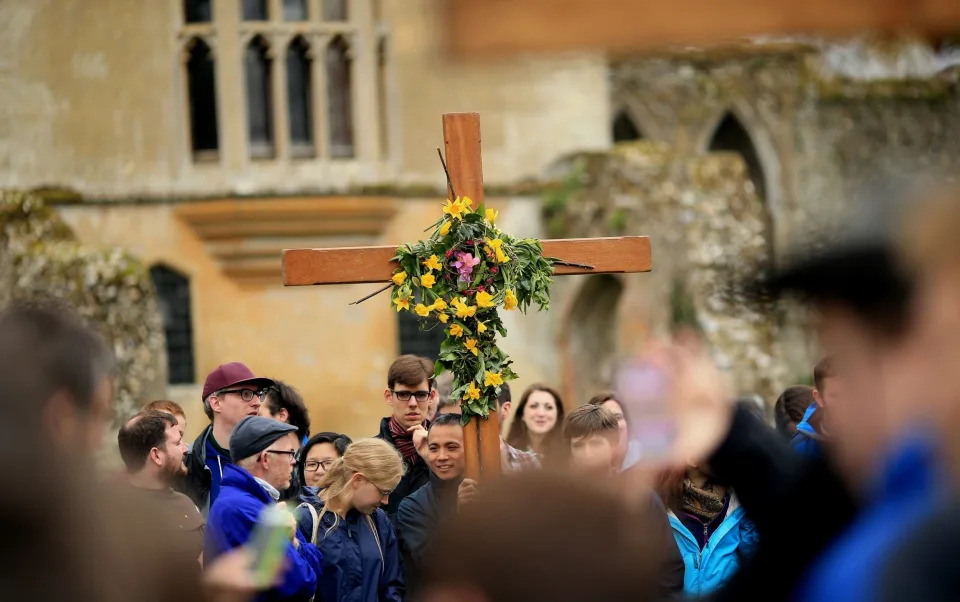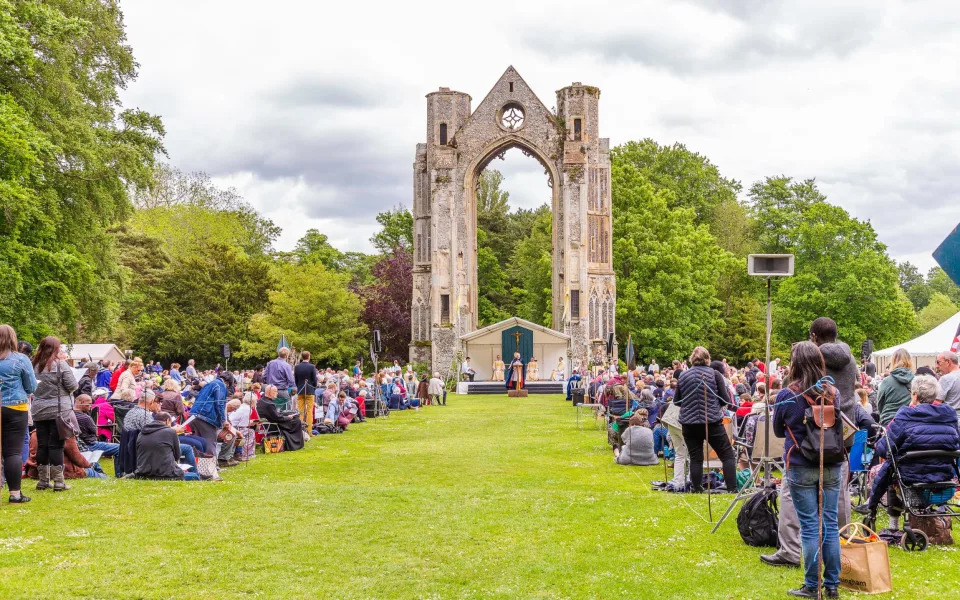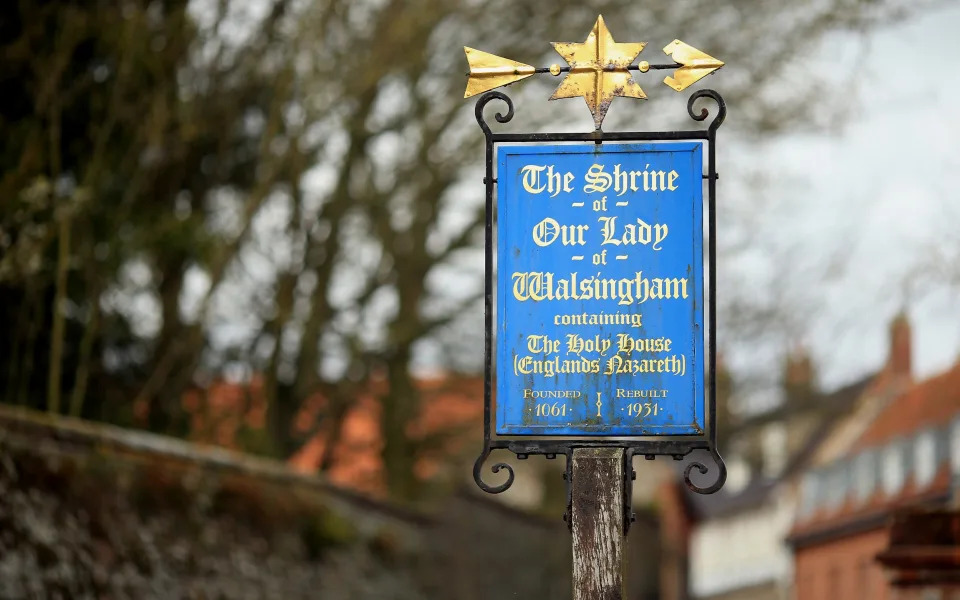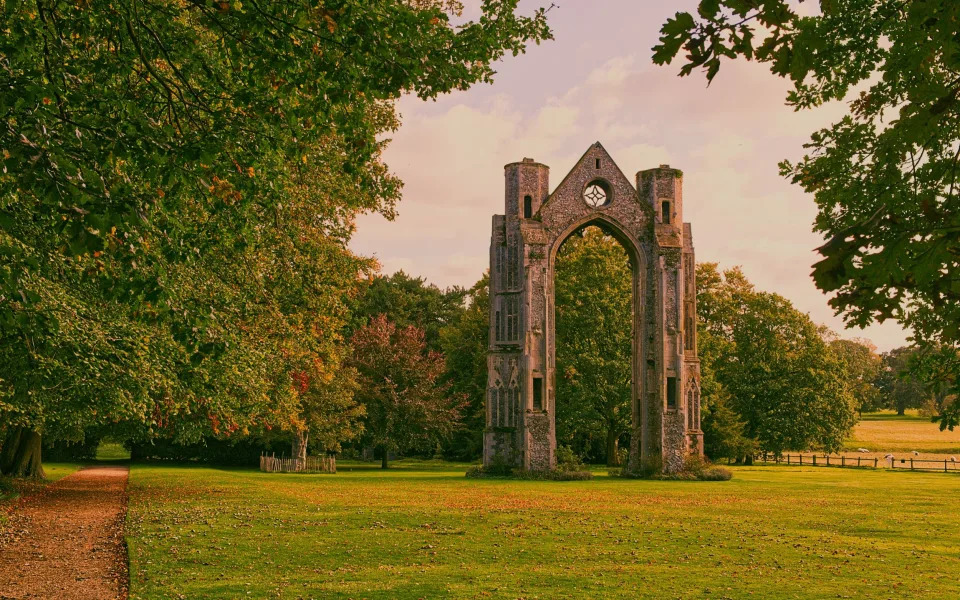The sleepy English village that once rivalled Rome
On a crisp mid-winter morning, Walsingham slumbered. Bunting fluttered above the empty high street, with its grand Georgian and medieval half-timbered buildings. The tea rooms were shuttered, the pubs closed. The gift shops were open but doing a dismal trade – there was little demand for their miraculous fridge magnets and canonical cufflinks today.
Hard to believe that, a few centuries ago, this hushed north Norfolk village was one of Europe’s greatest pilgrimage sites.
Yes, quiet little Walsingham, sitting unassumingly in the shallow Stiffkey Valley, is England’s Nazareth. In the Middle Ages it was almost as important as Canterbury, and up there with Santiago de Compostela and Rome. This, so the story goes, is on account of local noblewoman Lady Richeldis de Faverches having a vision here in 1061, in which the Virgin Mary showed her the house where the Annunciation occurred and instructed her to build a replica.
Richeldis erected a simple wooden structure that soon became a more elaborate shrine, with an Augustinian Priory established alongside. The site drew worshippers from across the continent, including most monarchs of England up to Henry VIII – before he dissolved the priory in 1538 and put paid to the pilgrimage industry.
“This is the spot,” Elizabeth Meath Baker told me, pointing to a patch of grass in front of the priory’s ruined East Window – virtually all that remains of the old church. Excavations here in the 1960s found evidence of the original Holy House.
Elizabeth has lived in the manor on the Walsingham Abbey estate since her husband inherited it from his grandparents. It’s quite the responsibility to marry into. “When I came to meet the family, one cousin said we should simply bulldoze the place,” Elizabeth said.
But fortunately she has a sense of duty, an interest in history and a move-with-the-times outlook – new for 2023 will be production of the first Walsingham-grown wine. She also has an appreciation of what her home means to others: “Walsingham is not like other places. It’s not just another country house. While I’m worrying about practicalities like mowing the lawn, people are feeling powerful things here.”
Modern pilgrims began returning in the late 19th century. First they focused on the 14th-century Slipper Chapel, a mile outside the village, and now part of the Roman Catholic shrine. In the 1930s, an Anglican shrine was reestablished in the centre of Walsingham, containing a new version of Richeldis’s Holy House. Father Kevin Smith, the shrine’s current Priest Administrator, recalled visiting as a 14-year-old and being enraptured: “I remember the two massive Malta lanterns – I’d never seen anything like them, such beautiful things.”
The main pilgrim season runs from April until September, so the shrine’s welcome centre and gardens were quiet when I visited. So too was the church, with its 20th-century Holy House squatting in the red-brick nave. The walls were lined with shelves of candles and dedications, while a stainless steel urn was filled with Walsingham water – “not suitable for babies and young children”. Religious pilgrimage is still a big deal – around 250,000 people visit each year. But numbers are dwindling.
“We’re looking at ways to attract new pilgrims,” Fr Kevin said. “We’re doing more social media, and our accommodation is now available on Booking.com.”
New routes have been established to encourage walkers too – at the moment, most pilgrims come by coach. In 2021 the 37-mile Walsingham Way was launched, linking Norwich Cathedral and Walsingham. Next, the plan is to waymark a route between Walsingham and King’s Lynn. In September 2022 a guide to the London to Walsingham Camino was published, describing the 178-mile walk from the capital’s Church of St Magnus the Martyr. “We hope it will increase interest, especially for people from London living stressful lives,” Fr Kevin added.
But there’s more to Walsingham than the Virgin Mary, insisted local Blue Badge guide Scilla Landale, who has been running tours here since 1988. “It’s a wonderful medieval-planned village,” she told me. “There’s an 18th-century prison, narrow-gauge steam railway, two pubs – down from 21 in medieval times – and a Georgian courthouse, last used in 1974, but which still looks like the magistrate just walked out.”
The main issue, she said, is that, despite being just inland from popular Wells-next-the-Sea, Walsingham has a promotion problem: “There are people in Norfolk who don’t know about it.”
There’s another fine reason to visit in winter: snowdrops. “Experts disagree about the origins of the flowers in this country,” Elizabeth explained as we scanned the Abbey grounds for green shoots. “There’s lots of folklore associated with them. They’re the first sign of spring, and symbols of purity. It’s possible they were brought by pilgrims and put down as offerings.”
Certainly there have been snowdrops – aka Candlemas Bells or Mary’s Tapers – at the Abbey for as long as anyone can remember; Elizabeth’s grandmother-in-law spent a lot of time tending and spreading them. Now, come mid-February, around 18 acres of the estate are carpeted in the delicate white blooms. A vision indeed.
How to do it
Walsingham Abbey opens for snowdrop season on January 23 (01328 820510; walsinghamabbey.com). For guided Walsingham tours, contact Scilla Landale (07747 693235; scilla.landale@afiweb.net). B&B rooms at Walsingham Anglican Shrine cost from £42pppn (01328 820239; walsinghamanglican.org.uk). For Walsingham Way info, see walsinghamway.blog. The London to Walsingham Camino guide is available from Amazon. For further information see walsinghamvillage.org


 Votes : 0
Votes : 0













